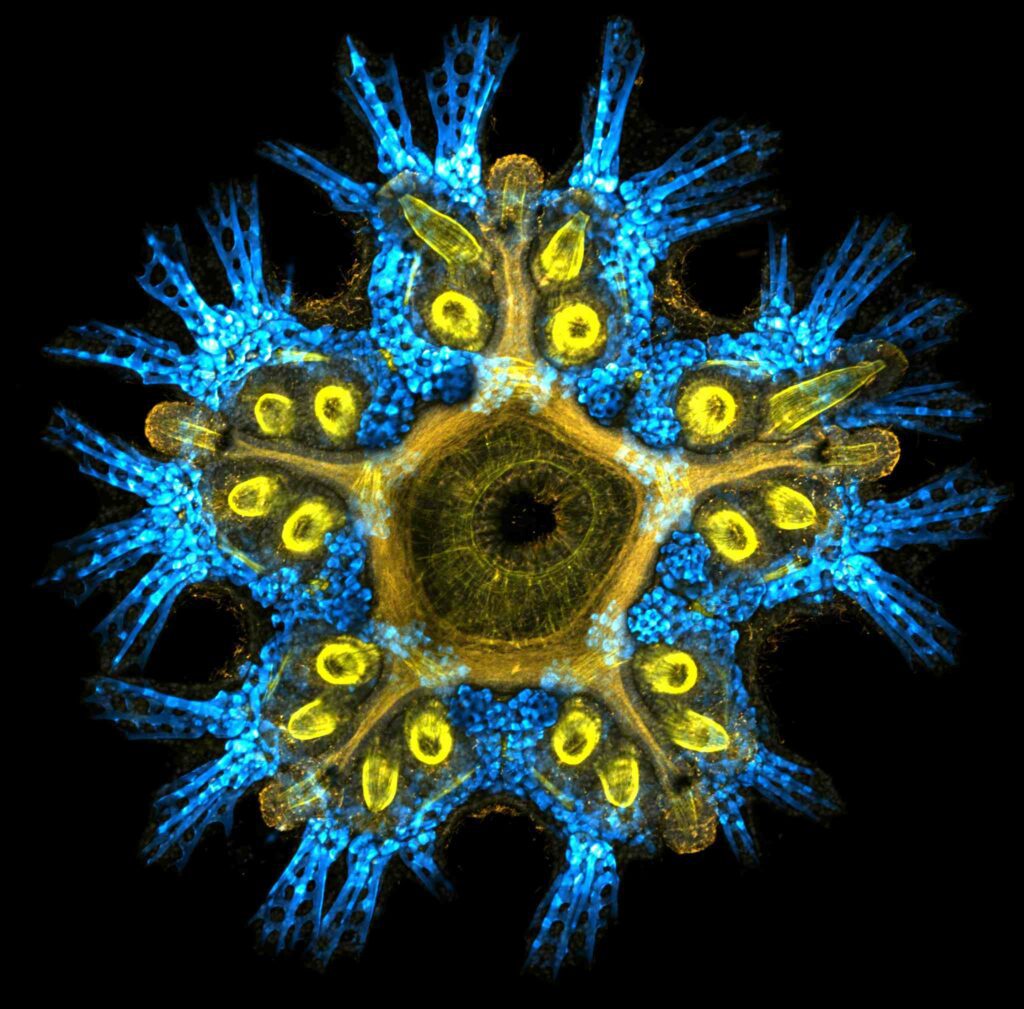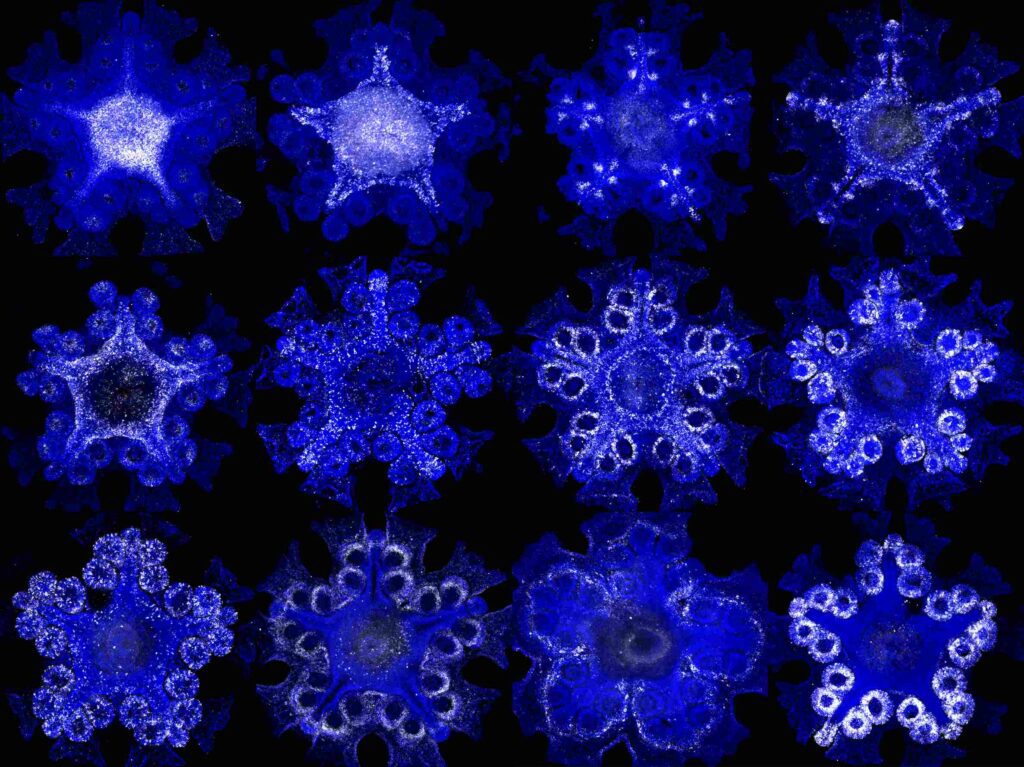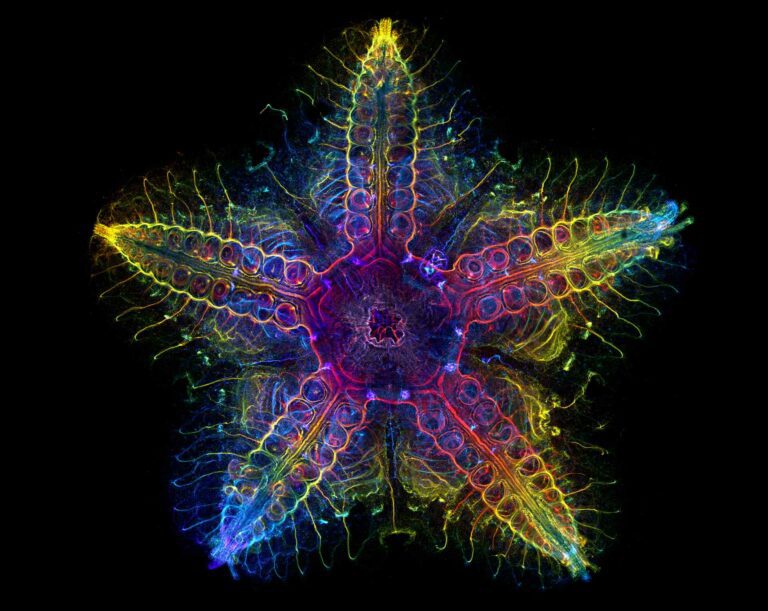Where would a starfish wear a hat, if it had one, and how does its body layout relate to that of its close relatives, human beings? Such questions have long baffled scientists, but a team in California believe they have finally discovered where a seastar’s head is at – and it proved to be a complete surprise.
Using advanced genetic and molecular tools, the researchers created a 3D atlas of starfish gene expression (the way in which data encoded in a gene is turned into a function) and mapped out their body regions.
“The answer is much more complicated than we expected,” says post-doctoral scholar Laurent Formery of Stanford University, lead author of the study, which was conducted in the laboratories of senior author Prof Christopher Lowe at Stanford School of Humanities & Sciences, with Daniel S Rokhsar of the University of California, Berkeley.
“It is just weird, and most likely the evolution of the group was even more complicated.” The echinoderm group includes not only starfish but sea cucumbers and sea urchins.

Unexpected was that a starfish’s “head” turns out not to be located in any single place. Instead, the scientists detected “headlike” regions distributed throughout its centre and in the middle of each limb, with a tail-like region along its perimeter.
Because no part of a seastar had the genetic patterning associated with an animal’s trunk, it seems that starfish are best described as heads with the ability to crawl!
Zoological mystery
Seastars are very ancient but also closely related to humans. They start life as fertilised eggs that hatch into free-floating larvae and can drift as plankton for months before settling on the seabed.

At this point they transform from having a symmetrical “bilateral body plan” like humans, into adults with a five-pointed star shape, or “pentaradial body plan”.
“This has been a zoological mystery for centuries,” says Lowe. “How can you go from a bilateral body plan to a pentaradial plan, and how can you compare any part of the starfish to our own body plan?
“There is nothing on a starfish anatomically that you can relate to a vertebrate. There is just nothing there.” Deciding to ignore the “weird” anatomy, the team chose to concentrate on analysing the starfish at genetic and molecular level.
Batstars (Patriria miniata) were chosen because protocols already existed from previous scientific research into the species, which is very common on the US West Coast where the team works.

“First we sectioned seastar arms into thin slices from tip to centre, top to bottom, and left to right,” says Formery. “We used RNA tomography to determine which genes were expressed in each slice and then ‘reassembled’ the slices using computer models. This gave us a 3D map of gene expression.”
A second method used a recent technical development called in situ hybridisation chain reaction. This involved staining batstar tissue and visually inspecting it to determine where a gene was expressed.

“Even in recent molecular papers there’s a question mark near echinoderms on the evolutionary tree, because we don’t know much about them,” says Formery. “It was nice to show that – at least at the molecular level – we have a new piece of the puzzle that can now be put on the tree.” The team’s research is published in Nature.
Also on Divernet: Partying starfish pursue teenage lifestyle, Diver survey sheds light on seastar epidemic, Dive instructor ‘unaware of COTS danger’, Death of a star

